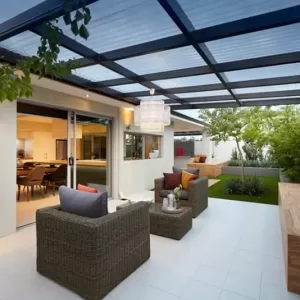Plants That Give Wealth, Health, and Love | Gurgaon | Noida | Delhi NCR
Plants That Give Wealth, Health, and Love
As we know that Plants have many functions; Not only does it have a stylish design that can provide good circulation to the room, but experts also use it to bring good luck to the residents of the house. Plants are the final piece to create a beautiful home, a step that can unite the atmosphere with the rest of the house.
For many people, the choice of plants depends entirely on the beauty they want to create. Other factors that are also included are size and maintenance. However, green plants in the house can also attract wealth, health and love.
Since palms are the largest indoor plants available, they are ideal for dividing rooms and also injecting a bit of naturalness into the home. Palm trees give a breezy and tropical feel, and are flexible in attracting positive energy. Palms actually activate the elements that are lacking or absent in the room.
The name is a little misleading, considering that this plant is not actually a type of bamboo, but Draconian. The name given to this plant is just to show the much luck it brings. Considering this hockey bamboo has been known for thousands of years as a plant that brings peace, health, love and luck in the house. Its arrangement, especially the number of stalks, indicates the luck it brings. If placed on the east side of the house will focus on the family and on the southeast is the center of wealth, and placing hockey bamboo in both places will benefit the homeowner.
Lucky for homeowners who do not have time to care for plants , because this hockey bamboo is not difficult to care for. Just need a little sunlight and clean water.
The snake plant, also known as the mother-in-law’s tongue plant, can be a bit controversial because some people consider it a bad plant. However, when placed in an ideal position in the home or office, the mother-in-law’s tongue plant can provide powerful energy and protection for the homeowner from negative Chi. Make sure you place the plant in an area of the house that is not full of people.
The jade plant, far right in the photo above, is a succulent plant known to bring positive results for wealth and well-being. This medium-sized plant looks beautiful in many places, but for purposes, the jade plant is best suited for a home office because of its tendency to attract money and business. Usually placed at the entrance to welcome success for the homeowner.
Orchids are one of the most beautiful flowering plants, so placing them indoors as a design element is always a plus. However, this flower is not just beautiful. that orchids bring good luck in love. This herb enhances the current relationship, but more importantly, increases the chances of attracting a romantic partner.
One other benefit of orchids, they release oxygen at night, so placing them in the bedroom can help homeowners sleep better!
Ornamental rubber plants can provide benefits in any location, but are believed to be very useful if placed in a treasure area or even the front room of a house, just like a jade plant. Its leaves which are shaped like the moon are known to represent money or wealth.
Known for their braided-looking stems, the Pachira plant is one of the most popular products. It is a staple plant for the home of its devotee, known for bringing good luck and prosperity in the home as represented by its intertwined stems.
This tree only needs to be watered every week. Pachira plants can also survive in low light, so it’s fine to keep them indoors or in the shadows.
The simplest method of care is to pay attention to the schedule of watering plants. Be careful, because each plant species needs water differently. Orchids should not be watered every day, just when the conditions are almost dry. Watering hockey bamboo should be at least once a week. Succulents, such as mother-in-law’s tongue and jade, are recommended twice a week.
In addition, the location of placement also affects the water needs of plants. Front of the house plants get abundant sunlight, should be watered more often than indoor plants. Indoor plants that are watered too often will rot quickly.
Should avoid the use of inorganic fertilizers. Natural materials are much friendlier, such as leaf and grass fall, or goat manure. Goat manure contains high potassium, good for flower and fruit plants. Meanwhile, leaf fall compost contains nitrogen elements that plants need.
Compost is made by decomposing fallen leaves and grass. The material is crushed first, then stored for about 4 weeks, while constantly being kept moist. Once finished, the compost is mixed with soil which is used as a planting medium.
Growing houseplants or hockey-carrying plants requires commitment. Not just planting and then letting it grow big, ornamental plant owners are encouraged to always maintain the condition of these green creatures. It is a pity if a beautiful plant, such as the pachira tree, loses its charm due to the carelessness of its owner.






